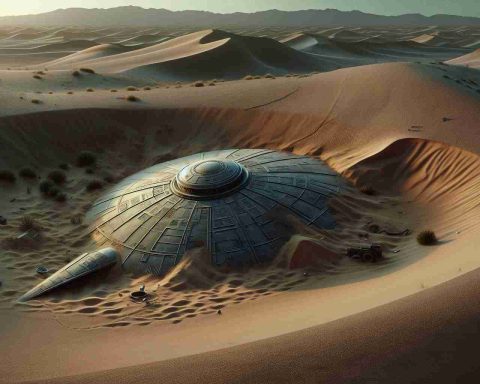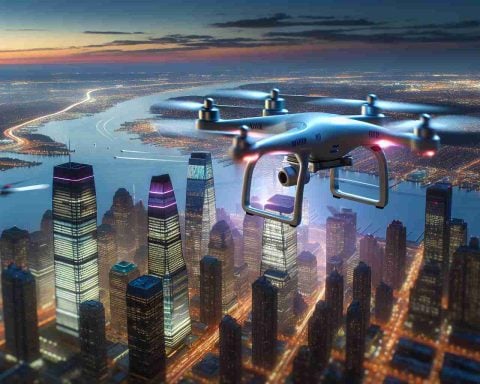Historic Space Docking Mission
On December 30, 2024, India’s space agency, ISRO, achieved a significant milestone by launching its Polar Satellite Launch Vehicle (PSLV) from the iconic Satish Dhawan Space Centre in Sriharikota. This mission, known as the Space Docking Experiment, or SpaDex, marks the agency’s inaugural attempt at demonstrating a space rendezvous and docking in Earth’s orbit.
The launch was executed flawlessly, with perfect weather conditions aiding in the successful deployment of two satellites weighing 220 kg each, aptly named SpaDex A (the Chaser) and SpaDex B (the Target). Following the launch, the Chaser satellite sent back an exciting video, showcasing its position in orbit—a remarkable feat demonstrating the capabilities of Indian space technology.
This pioneering mission is set to pave the way for future advancements in space exploration, highlighting ISRO’s commitment to pushing the boundaries of what is achievable in orbit. The SpaDex mission not only serves to equip ISRO with essential docking technology but also showcases India’s growing prowess in the global space arena. The stunning visuals captured by the Chaser satellite symbolize a leap forward in the nation’s ambitions for more complex space missions, integrating satellite technologies that could facilitate collaborations and operations in a sustainable space environment.
India Set to Revolutionize Space Exploration with SpaDex Mission
Historic Space Docking Mission
On December 30, 2024, India’s space agency, ISRO, achieved a significant milestone by launching its Polar Satellite Launch Vehicle (PSLV) from the iconic Satish Dhawan Space Centre in Sriharikota. This mission, known as the Space Docking Experiment, or SpaDex, marks the agency’s inaugural attempt at demonstrating a space rendezvous and docking in Earth’s orbit.
The launch executed flawlessly, with perfect weather conditions aiding in the successful deployment of two satellites weighing 220 kg each: SpaDex A (the Chaser) and SpaDex B (the Target). Following the launch, the Chaser satellite sent back an exciting video, showcasing its position in orbit—a remarkable feat demonstrating the capabilities of Indian space technology.
Innovations and Features of the SpaDex Mission
The SpaDex mission incorporates a suite of innovative technologies aimed at enhancing satellite interoperability and in-space logistics:
1. Automated Rendezvous Technology: SpaDex A utilizes advanced algorithms to autonomously navigate and dock with SpaDex B, a critical capability for future crewed space missions.
2. High-Resolution Imaging: The Chaser satellite is equipped with imaging technology that allows it to capture high-definition visuals of its target during the docking process, which is crucial for payload monitoring and operational assessments.
3. Communication Systems: Enhanced communication protocols ensure consistent data transfer between the two satellites throughout the mission, showcasing ISRO’s development of robust space communication solutions.
Pros and Cons of the SpaDex Mission
Pros:
– Pioneering Experience: This mission provides ISRO with essential experiences in rendezvous and docking operations, crucial for upcoming, more complex missions.
– Global Competitiveness: Enhances India’s reputation in the international space community and draws interest for potential collaborations.
– Sustainable Space Operations: Aims to facilitate future operations in reducing space debris and coordinating satellite movements effectively.
Cons:
– High Investment Risks: Space technology development involves significant financial risk and resource allocation, with uncertain outcomes in the early stages.
– Technical Challenges: Ensuring the reliability of advanced technologies in real-time conditions can pose significant challenges during future missions.
Pricing and Market Analysis
While specific costs related to the SpaDex mission remain undisclosed, ISRO’s PSLV program generally costs significantly less than its international counterparts, often cited as being around $15 million per launch. This economic edge positions ISRO strategically in the growing market for launch services, projected to grow as more countries and private companies seek access to space.
Security Aspects of Space Docking Technology
The introduction of docking technology raises important security considerations, particularly regarding satellite integrity and space security. Protecting the data exchanged during these maneuvers and guarding against potential space debris impacts is paramount. With increased launches planned, addressing these aspects will be crucial in maintaining a sustainable and secure orbital environment.
Future Directions and Insights
The successful completion of the SpaDex mission lays the groundwork for India’s ambitions in more complex space operations, including potential collaborations on international space stations and crewed missions. As space agencies worldwide pivot towards more collaborative approaches, ISRO’s advancements in docking technology will be critical in leveraging partnerships to tackle global challenges in space exploration.
For more comprehensive insights into ISRO’s projects and future developments, visit the ISRO official website.



















